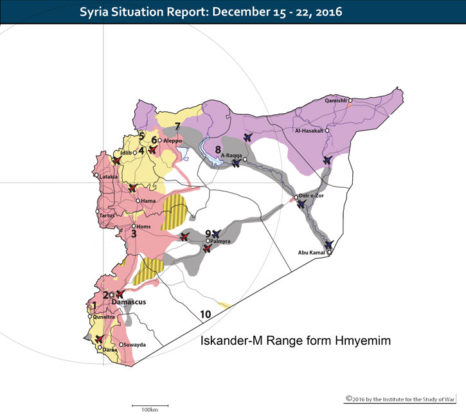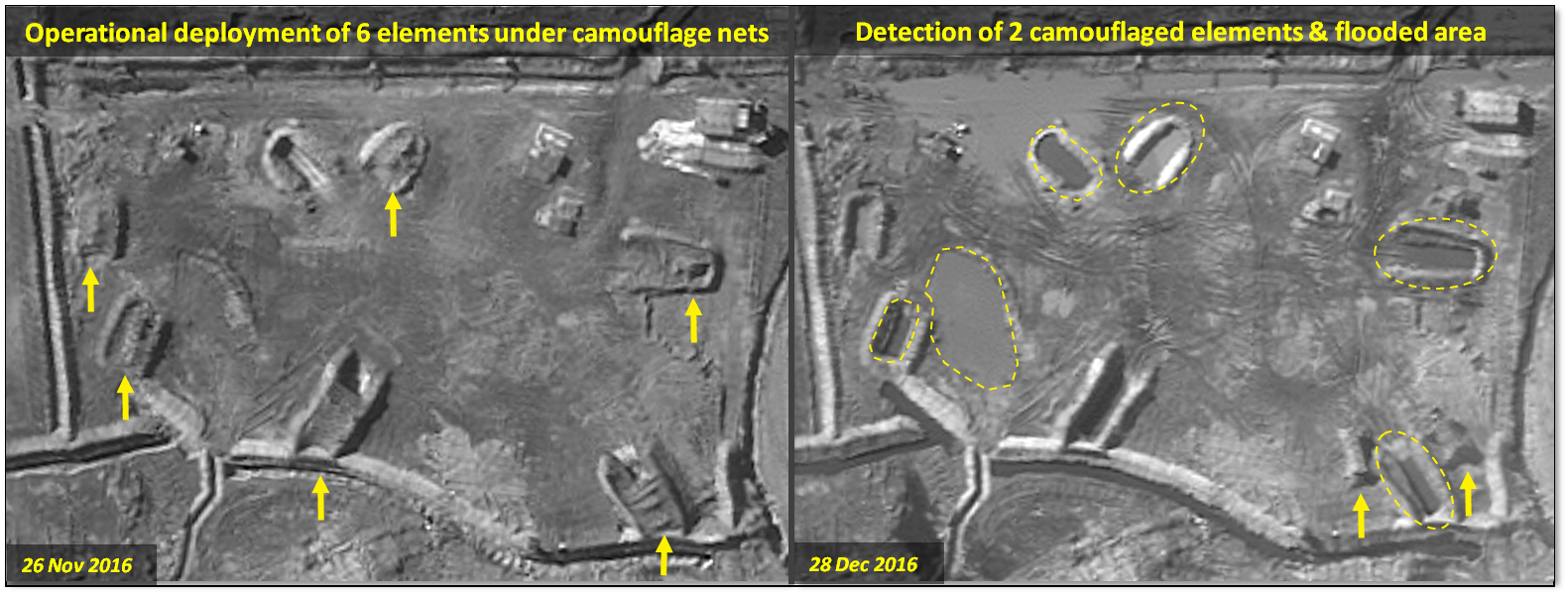Totta, sateenvarjo on iltapulujen lööppikieltä. Toimintavapauden riistäminen saattaisi sopia paremmin.Sateenvarjoa ei silti saada aikaan.
Install the app
How to install the app on iOS
Follow along with the video below to see how to install our site as a web app on your home screen.
Note: This feature may not be available in some browsers.
You are using an out of date browser. It may not display this or other websites correctly.
You should upgrade or use an alternative browser.
You should upgrade or use an alternative browser.
Venäläinen sotataito
Jenkkien DOD näkemys Venäjän strategisista kohteista Pohjois-Euroopassa.

http://www.dod.mil/pubs/foi/Reading_Room/Other/Litigation Release - The Northwestern TVD in Soviet Operational Strategic Planning 2014.pdf
Erittäin mielenkiintoinen luku sivulta 20 eteenpäin

"The Soviets maintained a political and intelligence contingent in the capital of Mariehamn via a consulate, enabling Moscow to prepare the Ålander physiologically for submission during crisis and leaving them vulnerable to a pre-emptive spetnatz action against the local government." ... tämä vuoden 2014 paperista evostoinvansioon skandinaviassa.

http://www.dod.mil/pubs/foi/Reading_Room/Other/Litigation Release - The Northwestern TVD in Soviet Operational Strategic Planning 2014.pdf
Erittäin mielenkiintoinen luku sivulta 20 eteenpäin

"The Soviets maintained a political and intelligence contingent in the capital of Mariehamn via a consulate, enabling Moscow to prepare the Ålander physiologically for submission during crisis and leaving them vulnerable to a pre-emptive spetnatz action against the local government." ... tämä vuoden 2014 paperista evostoinvansioon skandinaviassa.
Viimeksi muokattu:
Camel
Korpraali
Jenkkien DOD näkemys Venäjän strategisista kohteista Pohjois-Euroopassa.

Mihin mielestänne Islannin strateginen merkittävyys perustuu?
Mihin mielestänne Islannin strateginen merkittävyys perustuu?
Pohjois-atlantin herruudesta.
JR49
Respected Leader
Kohta 4 on siellä erityisen hyvin hanskassa.Nähty on.

Osasto 31
Kapteeni
Venäjä etenee Arktisessa ympäristössä.
Russia wants more control over Arctic airspace
We are engaged in a serious effort to enhance control over the area, leader of the country’s Radio-Radar troops says.
Major General Andrey Koban confirmed to Life Zvuk, a radio program, that new and upgraded military units in the Arctic now are capable of keeping track of movements in the regional airspace both at medium and high altitudes.
In an interview, the military representative underlined that there are operational radio-technical units at the bases in Franz Josef Land, Novaya Zemlya, New Siberian Island, Cape Shmidt, as well as other places.
«In the 1999s we lost the Arctic as a ground for radar monitoring [however], over the last several years we have seriously engaged in restoring control over the Arctic airspace», Koban said.
The radio-radar capability is vital «because several countries now are attracted to this region», the major general underlined.
He argues that the new units in early August last year proved their capacities when they discovered and kept track of two U.S. B-52 strategic bombers which flew along the whole Russian Arctic border.
Russia is in the process of building and upgrading several new Arctic bases. Among them is the Kotelny base in the New Siberian Islands. Included in that project is the upgraded Temp airfield and the 12,000 square meter big trefoil-shaped Severny Klever housing and administration complex. The facility includes all equipment needed for comfortable living for more than 250 people.
The Kotelny base was in December declared ready for operations.
The radar equipment is safely installed in a way which makes them operational in all seasons and weather conditions, Major General Koban.
John Hilly
Respected Leader
Venäjä etenee Arktisessa ympäristössä.
Tutkaverkoston rakentaminen on normaalia toimintaa, johon jokainen valtio pyrkii.

Iskanderin 500 km kantama Syyriassa.
http://defense-update.com/20170106_iskander-in-syria.htmlAccording to high-resolution images taken by ISI’s EROS-B satellite, the analysts assume the system is routinely deployed under camouflage nets at a nearby unpaved compound. Most probably, heavy rain and floods forced the re-deployment of those two elements to the location in which they were revealed by ISI. Further analysis uncovered two additional elements covered by camouflage nets deployed at the compound, which are most probably part of the Iskandar system.
In March 2016 press reports indicated Russia had deployed Iskander missile systems to its Hmeimim Air Base in Syria, but it was unclear these vehicles carried ballistic or cruise missiles. Russia has repeatedly used sea-launched and air-launched cruise missiles in supporting the Syrian Army in its battle against rebels, but so far refrained from using ballistic missiles. The Syrian regime has used ballistic missiles of all types, through the five-year conflict and have asked Moscow to send the export variant – Iskander-E but there were no indications such shipments were made.
From its base in Hmeimim the strike range of the SS-26 system covers the entire area of Syria, In service with the Russian Ground Forces since 2006 the 9K720 Iskander-M system carries two short-range tactical ballistic missiles. Each missile carries a warhead of 480-700 kg. Various warheads are available, including penetrating high explosives (HE), fragmenting HE, fuel-air explosives, and submunitions. The Russians have also developed a nuclear warhead for this type.
Iskander-M has a range of 400-500 km (depending on the warhead used). It uses several guidance methods, including inertial, Glonass and scene matching techniques to achieve very high hit accuracy (4-7 meters).
Moscow often emphasizes the deployment of these weapon systems, particularly in the Kaliningrad enclave in the Baltic Sea, where it is considered mainly as a political deterrent move against Europe.

En oikein osaa etsiä, onko tämä ollut esillä foorumilla, sori jos tulee tuplana. Tullut käsittääkseni ulos vasta nyt tammikuussa.
"The Russian Way of War" FMSO Study Author | Editor: Grau, L. & Bartles, C. (Foreign Military Studies Office).
http://nsiteam.com/social/wp-content/uploads/2017/01/TheRussianWayOfWar_low.pdf
Esittelee venäläisten kokoonpanoja, varustusta ja taktiikkaa ryhmätasolta ylöspäin. Erittäin informatiivinen opus. Eli miten ryhmä puolustautuu, komppania puolustautuu ym. Miten huolto toimii ym.
"The Russian Way of War" FMSO Study Author | Editor: Grau, L. & Bartles, C. (Foreign Military Studies Office).
http://nsiteam.com/social/wp-content/uploads/2017/01/TheRussianWayOfWar_low.pdf
Esittelee venäläisten kokoonpanoja, varustusta ja taktiikkaa ryhmätasolta ylöspäin. Erittäin informatiivinen opus. Eli miten ryhmä puolustautuu, komppania puolustautuu ym. Miten huolto toimii ym.
En oikein osaa etsiä, onko tämä ollut esillä foorumilla, sori jos tulee tuplana. Tullut käsittääkseni ulos vasta nyt tammikuussa.
"The Russian Way of War" FMSO Study Author | Editor: Grau, L. & Bartles, C. (Foreign Military Studies Office).
http://nsiteam.com/social/wp-content/uploads/2017/01/TheRussianWayOfWar_low.pdf
Esittelee venäläisten kokoonpanoja, varustusta ja taktiikkaa ryhmätasolta ylöspäin. Erittäin informatiivinen opus. Eli miten ryhmä puolustautuu, komppania puolustautuu ym. Miten huolto toimii ym.
Lisää tuollaisia linkkejä!
Toinen kirjoittajista Lester W. Grau on ennestään tuttu. Aikaisemmasta tuotannosta olen lukenut The Bear Went Over the Mountain: Soviet Combat Tactics in Afghanistan ja
The Other Side of the Mountain: Mujahideen Tactics in the Soviet-Afghan War kirjat.
vastarannankiiski
Kenraali
Aikaisemmasta tuotannosta olen lukenut The Bear Went Over the Mountain: Soviet Combat Tactics in Afghanistan...
Oliko hyvä, voitko suositella?
Oliko hyvä, voitko suositella?
Ehdottomasti kannattaa lukea, jos Afganistan kiinnostaa.
vastarannankiiski
Kenraali
Ehdottomasti kannattaa lukea, jos Afganistan kiinnostaa.
Kyllä kiinnostaa, kiitos suosituksesta. Ajattelen asiaa siten että jos heidän nykypäivän toimiaan haluaa ymmärtää niin pitää aloittaa opiskelu heidän Afghanistanistaan ja edetä siitä systemaattisesti kohti nykypäivää.
En oikein osaa etsiä, onko tämä ollut esillä foorumilla, sori jos tulee tuplana. Tullut käsittääkseni ulos vasta nyt tammikuussa.
"The Russian Way of War" FMSO Study Author | Editor: Grau, L. & Bartles, C. (Foreign Military Studies Office).
http://nsiteam.com/social/wp-content/uploads/2017/01/TheRussianWayOfWar_low.pdf
Esittelee venäläisten kokoonpanoja, varustusta ja taktiikkaa ryhmätasolta ylöspäin. Erittäin informatiivinen opus. Eli miten ryhmä puolustautuu, komppania puolustautuu ym. Miten huolto toimii ym.
Kiinnostaisi kovasti tietää, että mitä ne tekee jos maasto ei ole noiden kaavioiden mukaisia tasankoja? Supistaako ne vain välejä, vai laittavat ukkoja eteenpäin pienemmissä osastoissa? Vai enkö vain ole kerennyt niin kauan lukemisessa?
kertakenttään
Ylipäällikkö
Prikaatitasoinen vesistoylitysten avittamis-prikaati
https://www.armyrecognition.com/nov...ade_receives_new_pp-2005m_pontoon_bridge.html
kun nuo yhdessa vaiheessa supistuivat melkein olemattomiin, viimeinen rykmenttitasoinen oli jossain Karjalassa, varmaan Ita-Saksan peruja ja vedetty "hyvaan harjoittelumaastoon" silloin.
- englantilaiset sentaan varastoivat omat vastaavansa, eivatka romuttaneet
https://www.armyrecognition.com/nov...ade_receives_new_pp-2005m_pontoon_bridge.html
kun nuo yhdessa vaiheessa supistuivat melkein olemattomiin, viimeinen rykmenttitasoinen oli jossain Karjalassa, varmaan Ita-Saksan peruja ja vedetty "hyvaan harjoittelumaastoon" silloin.
- englantilaiset sentaan varastoivat omat vastaavansa, eivatka romuttaneet
Erittain hyva tuo DIA:n Venaja-raportti (linkattuna pari postausta ylempana). Syyria kuvion ja shia-puolikuun luominen Pakistanin rajalta sinne asti arvioidaan paljolti puolustukselliseksi liikkeeksi - ja pitaa muistaa, etta Putin loi kannuksensa iso-venalaisten keskuudessa kyykyttamalla musulmaaneja Tsetsniassa, kun eka kerta oli mennyt noyryyttavalla tavalla pieleen.
believes that
the overthrow of former Ukrainian President
Yanukovych is the latest move in a long-established pattern of U.S.-orchestrated regime
change efforts, including the Kosovo campaign,
Iraq, Libya, and the 2003–05 “color revolutions”
in Georgia, Ukraine, and Kyrgyzstan.
Russian threat perceptions are not limited to the
United States, and Moscow views the danger
posed by Islamic militants and terrorists with
grave concern.
The Kremlin is particularly sensitive to the growth and spread of these ideologies
and their potential to further radicalize Russian
Muslims in the turbulent North Caucasus and
other Muslim areas of central Russia. Russian
military operations in Syria are also intended to
eliminate jihadist elements operating there that
originated in the territory of the former Soviet
Union, to prevent them from returning home and
posing a threat to Russia.
believes that
the overthrow of former Ukrainian President
Yanukovych is the latest move in a long-established pattern of U.S.-orchestrated regime
change efforts, including the Kosovo campaign,
Iraq, Libya, and the 2003–05 “color revolutions”
in Georgia, Ukraine, and Kyrgyzstan.
Russian threat perceptions are not limited to the
United States, and Moscow views the danger
posed by Islamic militants and terrorists with
grave concern.
The Kremlin is particularly sensitive to the growth and spread of these ideologies
and their potential to further radicalize Russian
Muslims in the turbulent North Caucasus and
other Muslim areas of central Russia. Russian
military operations in Syria are also intended to
eliminate jihadist elements operating there that
originated in the territory of the former Soviet
Union, to prevent them from returning home and
posing a threat to Russia.
Samasta bumagasta selviaa, etta uudet divisioonat ovatkin vahvistettuja prikaateja; riittavan suuria useamman tst-os. muodostamiseen "lennossa":
The Russian ground
forces fielded brigades of this type that had been
field tested in Afghanistan (1979–1989) and
had proved to be quite effective in combat.
Another development that had received great
impetus in the Afghanistan war was the reinforced battalion, or battalion tactical group
(BTG), a motorized rifle or tank battalion,
strengthened by other assets, such as artillery,
reconnaissance, and air defense resources. BTGs
are similar to NATO battalion task forces and
are ad-hoc organizations, individually created
and optimized to fulfill a particular mission.
The new Russian divisions are much smaller
than their Soviet predecessors. While a Soviet
motorized rifle division numbered around
13,000 officers and soldiers, Russia's new
motorized rifle divisions number around 9,000.
The Russian ground
forces fielded brigades of this type that had been
field tested in Afghanistan (1979–1989) and
had proved to be quite effective in combat.
Another development that had received great
impetus in the Afghanistan war was the reinforced battalion, or battalion tactical group
(BTG), a motorized rifle or tank battalion,
strengthened by other assets, such as artillery,
reconnaissance, and air defense resources. BTGs
are similar to NATO battalion task forces and
are ad-hoc organizations, individually created
and optimized to fulfill a particular mission.
The new Russian divisions are much smaller
than their Soviet predecessors. While a Soviet
motorized rifle division numbered around
13,000 officers and soldiers, Russia's new
motorized rifle divisions number around 9,000.
